Why Is The Battle Of Gaugamela Called Broken ‘Camel’s Back’?
Conny Waters - AncientPages.com - Alexander the Great (356 BC - 323 BC) rejected the peace terms of the Persian Emperor Darius in 331 BC.
Darius offered him much, including the land west of the Euphrates River. Additionally, Alexander could get a large sum of money and Darius’ daughter’s hand in marriage.
Alexander III route from Tyre to the Battle of Gaugamela site, and from there to Babylon. Map - credit: Dimitrios Dendrinos, University of Kansas/Researchgate.net
But the great military leader refused, and instead, he marched across the Tigris River into northern Mesopotamia. Darius assembled an even more massive army than the one he had led at the Battle of Issus in 333 BC.
Contemporary records claim Darius was in command of up to one million soldiers.
The Persian Emperor was determined to fight on open ground where his large army and 200 formidable Scythian chariots would be useful. The land on which they fought on October 1 was close to the village of Gaugamela. The name of the place means “camel’s back.” Gaugamela (probably Tel Gomel) was once located near Erbil, modern Iraqi Kurdistan.
Despite being heavily outnumbered, Alexander advanced, forcing Darius to attack with his chariots in the center. He conducted a careful survey of the enemy and ground. He also did not always listen to Parmenion, one of the leading generals in Macedonia, and Alexander’s primary general, who suggested a surprise night attack on Darius’s forces.
Parmenion’s suggestion was dismissed because Alexander wanted to defeat Darius in open battle but did not rush to the fight, being aware that his only chance to succeed against such odds (a million soldiers!) was strategic and tactical perfection. His tactical movement enabled him to open their ranks and attack the forces of Darius from the sides.
At the same time, he lured the large Persian army toward the wings before making a wedge-shaped attack on the Persian line to cut through enemy lines, confuse his cavalry forces and, thus, weaken them.
By making this decision, he endangered Darius’s position, who understood that there was nothing more to do than escape, so he did. Alexander remained on the field, and the battle was over. He was once again victorious.
Most importantly, he finally broke the Persian Empire for good, taking place at Gaugamela (“Camel’s Back”).
Alexander captured the Persian royal train and marched into Babylon.
By January 330 BC, he had taken Darius’s capital Persepolis and proclaimed himself King of Persia. Darius escaped but was soon murdered by Bessus, his relative and prominent Persian Satrap of Bactria.
Updated on September 30, 2023
Written by Conny Waters - AncientPages.com Staff Writer
Copyright © AncientPages.com All rights reserved. This material may not be published, broadcast, rewritten or redistributed in whole or part without the express written permission of AncientPages.com
Expand for referencesReferences:
Cían Harte, The Conquest of Persia: Alexander, the Strategist
Patrick, Sean, Alexander the Great: The Macedonian Who Conquered the World
More From Ancient Pages
-
 Huge Ancient Underwater Structure And Stunning Artifacts Discovered Off The Coast Of Salamis
Archaeology | Jun 26, 2019
Huge Ancient Underwater Structure And Stunning Artifacts Discovered Off The Coast Of Salamis
Archaeology | Jun 26, 2019 -
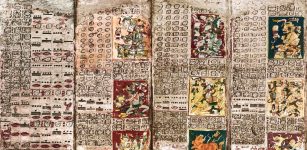 Dresden Codex – Probably The Oldest And Best Preserved Book Of The Maya
Ancient History Facts | Jun 24, 2016
Dresden Codex – Probably The Oldest And Best Preserved Book Of The Maya
Ancient History Facts | Jun 24, 2016 -
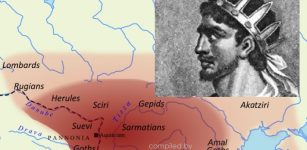 Attila The Hun: The Destroyer Of Rome Among Most Fearsome Enemies The Empire Ever Faced
Featured Stories | Jun 24, 2019
Attila The Hun: The Destroyer Of Rome Among Most Fearsome Enemies The Empire Ever Faced
Featured Stories | Jun 24, 2019 -
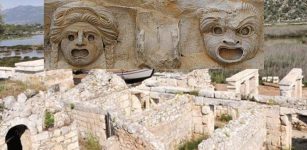 Ancient City Was Discovered Underground In Antalya’s Demre District
Archaeology | Nov 26, 2019
Ancient City Was Discovered Underground In Antalya’s Demre District
Archaeology | Nov 26, 2019 -
 Strange Ancient Underwater Yellow Brick Road Discovered Of The Hawaiian Islands
News | May 11, 2022
Strange Ancient Underwater Yellow Brick Road Discovered Of The Hawaiian Islands
News | May 11, 2022 -
 Mysterious Handprint And Cry For Justice From Beyond The Grave
Featured Stories | Jan 2, 2020
Mysterious Handprint And Cry For Justice From Beyond The Grave
Featured Stories | Jan 2, 2020 -
 Sacred Helgafell Mountain And The Story Of Torolv Mostrarskjegg
Featured Stories | Mar 13, 2024
Sacred Helgafell Mountain And The Story Of Torolv Mostrarskjegg
Featured Stories | Mar 13, 2024 -
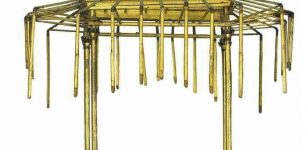 Was Tutankhamun’s Chariot Equipped With Its Own Sunshade?
Archaeology | Jun 27, 2019
Was Tutankhamun’s Chariot Equipped With Its Own Sunshade?
Archaeology | Jun 27, 2019 -
 Aboriginal Art And Knowledge Unlocks Mystery Of Fairy Circles
Archaeology | Apr 5, 2023
Aboriginal Art And Knowledge Unlocks Mystery Of Fairy Circles
Archaeology | Apr 5, 2023 -
 Nakano Takeko – Courageous Female Samurai Who Died Tragically While Defending The Aizu-Wakamatsu Castle
Featured Stories | Apr 24, 2021
Nakano Takeko – Courageous Female Samurai Who Died Tragically While Defending The Aizu-Wakamatsu Castle
Featured Stories | Apr 24, 2021 -
 New York Was Once Called New Amsterdam – History Behind The Change Of Name
Ancient History Facts | Jan 14, 2017
New York Was Once Called New Amsterdam – History Behind The Change Of Name
Ancient History Facts | Jan 14, 2017 -
 3,500 Underground Man-Made Maresha/Beit Guvrin Caves And Tunnels In The Holy Land
Featured Stories | Jun 1, 2014
3,500 Underground Man-Made Maresha/Beit Guvrin Caves And Tunnels In The Holy Land
Featured Stories | Jun 1, 2014 -
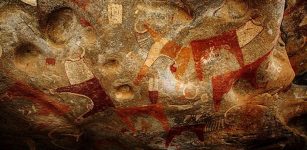 Somalia’s Legacy: Laas Geel Caves Covered With At Least 5,000-Year-Old Paintings
Civilizations | Oct 18, 2018
Somalia’s Legacy: Laas Geel Caves Covered With At Least 5,000-Year-Old Paintings
Civilizations | Oct 18, 2018 -
 Evidence Of Millennia-Old Textile Manufacture And Rare Ancient Eagle-Bone Pin Discovered In Oxfordshire
Archaeology | Jun 13, 2023
Evidence Of Millennia-Old Textile Manufacture And Rare Ancient Eagle-Bone Pin Discovered In Oxfordshire
Archaeology | Jun 13, 2023 -
 In Ancient Times We Had Weeks Of Different Lengths
Ancient History Facts | Sep 6, 2016
In Ancient Times We Had Weeks Of Different Lengths
Ancient History Facts | Sep 6, 2016 -
 Fascinating Ancient History Of Roman Shields
Featured Stories | Oct 1, 2018
Fascinating Ancient History Of Roman Shields
Featured Stories | Oct 1, 2018 -
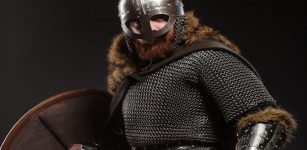 Hird – Viking Warriors And Professional Body Guards Prepared To Die For Their Leader
Featured Stories | Mar 22, 2018
Hird – Viking Warriors And Professional Body Guards Prepared To Die For Their Leader
Featured Stories | Mar 22, 2018 -
 Catequil – Inca God Of Thunder And Lightning Who Predicted The Future And Was Cultural Hero Of Inca People
Featured Stories | Nov 11, 2023
Catequil – Inca God Of Thunder And Lightning Who Predicted The Future And Was Cultural Hero Of Inca People
Featured Stories | Nov 11, 2023 -
 2,000-year-Old Uluburun Shipwreck Reveal Complex Trade Network
Archaeology | Nov 30, 2022
2,000-year-Old Uluburun Shipwreck Reveal Complex Trade Network
Archaeology | Nov 30, 2022 -
 Golden Secrets Of Lake Guatavita And The Muisca People Gave Rise To The El Dorado Myth
Featured Stories | Nov 12, 2019
Golden Secrets Of Lake Guatavita And The Muisca People Gave Rise To The El Dorado Myth
Featured Stories | Nov 12, 2019

